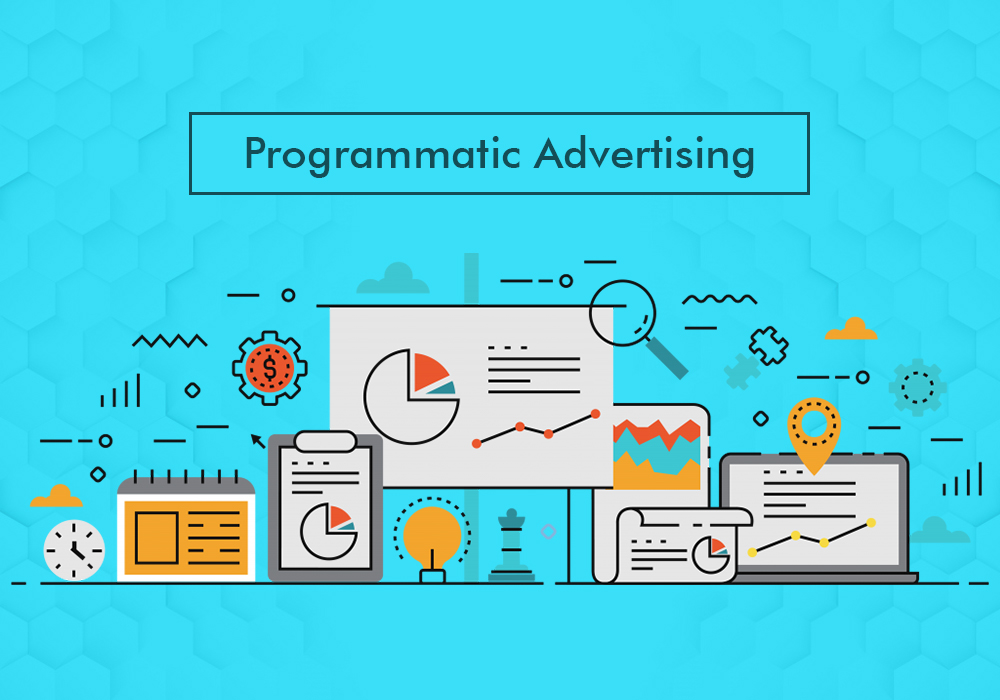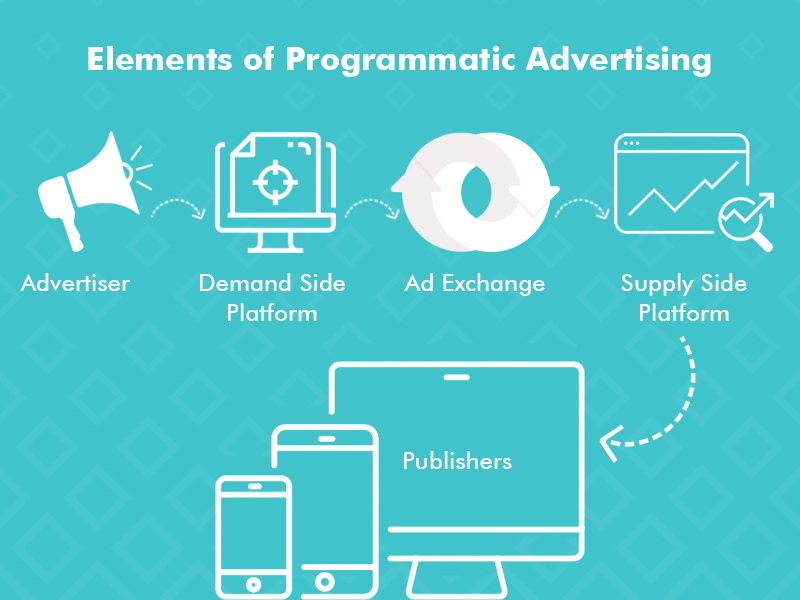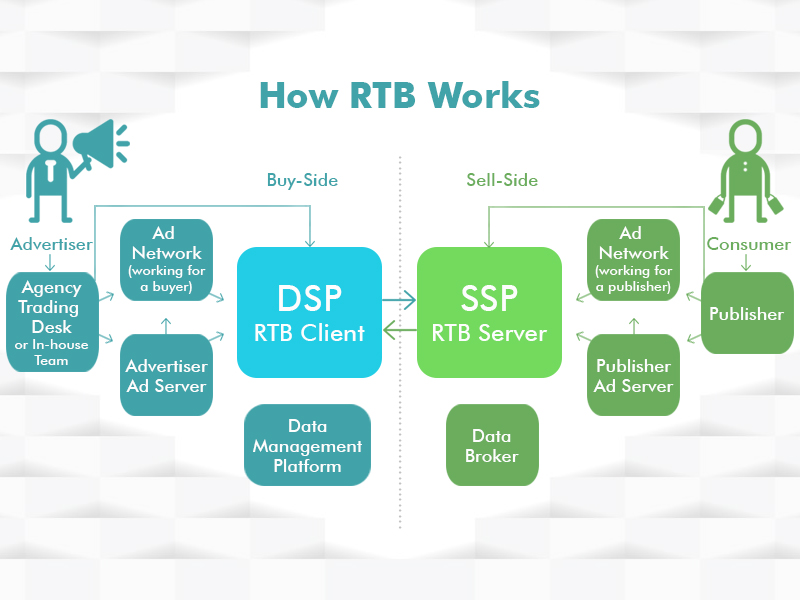Programmatic Advertising is touted to be the next big shift in online advertising. It is the process of purchasing ad space via automated software that relies on complex algorithms, enabling accurate audience targeting and ad personalization to generate better conversions on ad spends.

Programmatic Advertising in general refers to “programmatic ad buying”, a term advertisers use to describe the process of automated purchase of ad space. This eliminates human error & inefficient duplicity in traffic while giving maximum transparency & optimization opportunities. Consumers today aren’t limited to just one or two platforms online. They reach you through your website, other websites, emails, and multiple social platforms. Thus to reach consumers at maximum points along their digital journey, we need to break away from conventional or restrictive ad technology that targets limited platforms.
Consumers today also love to multitask. They don’t just stick to one device at a time. A typical case of watching television on a smart TV, with a tablet screen open on the side to stream or have something else running, a mobile device in hand to communicate or game is all too common. Using programmatic Omni-channel marketing, marketing messages can be delivered on all fronts. At the right time, in the right format.
Elements of Programmatic Advertising

Demand-side Platforms (DSPs):
DSPs is used by advertisers & agencies to manage media buying. A campaign is created, monitored, and optimized throughout its lifecycle through here. This is where brands & agencies outline their ad budgets, and gauge how many impressions and clicks they can expect to get as a result. A DSP has access to huge amounts of data and analytics tools that helps to find the correct audience for the advertiser. Each DSP should be carefully evaluated against your business needs to determine the best fit. Some options include AOL, The Trading Desk, Rocket Fuel, and DoubleClick Bid Manager, or DBM.
Supply-side Platforms (SSPs):
An SSP assists publishers in selling and managing their ad spaces (inventory) programmatically. Publishers automate media selling, but define certain rules and make inputs to the SSP to define their strategy. For example, they select channels & tagging information and minimum selling price of each kind of ad inventory that helps advertisers gauge and select from the various options available to them. Some SSP’s are OpenX, AOL and AdX.
Ad Exchanges:
Ad Exchanges are marketplaces that connect DSPs and SSPs. Their main goal is to help advertisers buy ads from multiple publishers automatically via auctions.
Ad Server:
An Ad Server is the infrastructure – comprising both physical servers and accompanying software engines - that hosts ad creative in various formats, including video, for different platforms – websites, mobile apps and social platforms. It is used for tracking users across various platforms, rather than just a specific website which ensures the delivery of ads to target audience on different digital platforms, websites, and mobile apps based on user’s behaviour. They’re also known as campaign management platforms.
Data Management Platform (DMP):
The data management platform (DMP) is the core of programmatic advertising. It acts as a hub where data, of various types from various sources, is collected and analysed. It helps provide the best outcomes for both buyers and sellers & helps in bid decision making.
How Programmatic Advertising Works
Programmatic Advertising connects Demand Side Platforms (DSPs) to Supply Side Platform (SSPs). Publishers use SSPs to monetize their inventory and transfer data about their visitors to these platforms. The Advertisers then bid on the available ad spaces depending on the inventory that is sent to DSPs (ad exchanges) by SSPs. DSPs get all the necessary data about publishers audiences (age, GEO, device types, search histories, etc.), render ads and then deliver them back to SSPs.
Advantages of Programmatic Advertising
Programmatic helps advertisers access ad inventory directly, removing the need for intermediaries from the process that makes programmatic ad buying cheaper and more effective. The algorithms search through hundreds of available inventories & then come back with the best buy options.
It also provides a much wider range of targeting options & is not bound to a specific medium or format, which is not the case when you buy ad spaces manually. The bids are arranged individually, for each user accessing the publisher's website, which makes targeting more precise and helps advertisers reach their relevant target audience at the right time & place. Advertisers always have access to the quantity and quality of visitors viewing their ad, in addition to various analytical insights allowing them to fine tune the process wherever necessary.
Advertisers also do not need to pre-negotiate a price of a given ad unit with a particular publisher, they only pay for the impressions they receive. The number of impressions they can purchase is flexible and so is the budget, which makes the technology lucrative even for SMBs.
Is RTB (Real Time Bidding) & Programmatic the same?

RTB is a component of programmatic bidding & serves as a platform for auction marketplaces, allowing advertisers to bid for a certain ad impression in real time. Advertisers set up the campaign & targeting and compete for an ad impression with automated bids. The ad with the highest bids wins the auction & gets placement on the webpage, while the ad budget is still available. User data is also sent along with bidding data in real-time from the browser to an ad exchange, which enables more specific targeting and directly influences the outcome of the auction. It also ensures that the ad with the right targeting parameters is shown to the user to improve the relevance of the ad.
Possible Threats of Programmatic Advertising
Brands sometimes don’t want their ads to be shown on particular websites. Websites they consider offensive, unreliable or which simply don’t fit their ethos. However, with programmatic advertising, you’re buying metrics like impressions, not a list of outlets. Even though you can blacklist websites to avoid this, it requires active monitoring and management as new questionable outlets come up from time to time, and serial spammers tend to change their domains frequently.
Both buyer & seller cannot exercise any form of control on the security of their adverts sold or bought. Both need to have robust verification processes to ensure mutual safety and, more importantly, the security of visitors.












